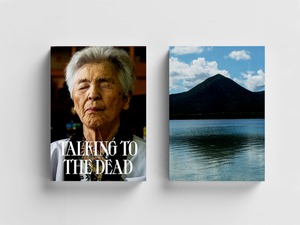『TALKING TO THE DEAD』 ※Book description in English
¥5,500
なら 手数料無料の 翌月払いでOK
The photobook, titled “Talking to the dead” is about an ancient line of female shamans called Itako who still exist in Japan.
Itako are female mediums who in Aomori prefecture. Though they generally perform a series of rituals, the most popular and well-known one is called Kuchiyose, by which Itako summon dead souls from the afterlife and, after becoming possessed by them, convey their words to loved ones in this life.
There have been shrine maidens throughout Japan since ancient times who conveyed messages from Kami (Shinto deities) and the dead. These maidens evolved over centuries into different forms. They still exist in the form of shamans in certain parts of Japan; among these the Yuta in Okinawa prefecture and the Tuskur from the indigenous Ainu people in the Northern Territories (Northern Japan). The Itako are shamans prevalent in Aomori prefecture; their uniqueness is that they were all originally blind women.
There were dozens of Itako in Aomori prefecture throughout the 1950s and 1960s. In the sacred mountain of Mt. Osore during twice-yearly festivals, people used to make long lines waiting for them to perform the Kuchiyose rituals. However, along with economic growth and modernization, belief in animism and shamanism gradually began to fade. As a result, the number for Itako diminished. There are now only a few left and they are elderly.
There is only one blind Itako left. Her name is Take Nakamura, she is 90 years old. Though still active, she will retire eventually. In the past, becoming an Itako was a way for blind women to be economically and socially independent. Later on though, more sighted women became Itako. As Take Nakamura is the last traditional, and one could say authentic Itako, her passing away could spell the end of a long tradition.
For this reason, my company decided to produce this photobook that not only documents Itako practices but also Japanese people’s faith in such ancient traditions. “Talking to the dead” is written in Japanese and translated into English.























 とは?
とは? 

